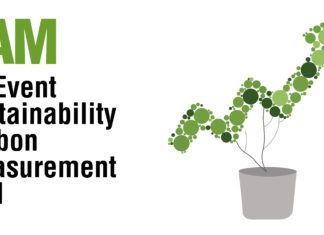US electric car maker Tesla Motors started work on the Tesla Roadster in 2004, which was first delivered to customers in 2008.
The Harvard Business School credits the 1990’s as when sustainability in business finally came to meet head-on the longer term trend in consumer society.
So why has it taken the events industry so long to engage with this topic?
Cynics might say that the client-agency-supplier model has been working just fine, thank you, for many years.
Perhaps it’s a wider trend, that those bright young things in our industry favouring brands, corporates and agencies put their money where their mouth is.
Or could it be, surely not, that agency can sense current competitive advantage by demonstrating measurable sustainable credentials in the pitch process.
Now we have new ESG-masters, measuring and reporting. Granted, events have not been top of the agenda for the regulators but they will come and they will demand we measure and take action.
Likely it’s a bit of all four and others – but thankfully all point in the right direction.
Good news.
We don’t have to look far to learn how to transform our industry. The automotives amongst others have done this already and demonstrate how we can evolve successfully.
In fact, they show that there’s a straight-line between the perceived sustainability of a brand and its profitability, but that’s for another time.
McKinsey detail exactly how we in events can achieve evolution:
- Transparency – both at an industry and brand level in measurement.
- Educate & train – we have a great, youthful workforce in events, eager to learn and deliver transformation.
- Rebuild – not just ourselves but our own supply/value chain as well.
In the real world, this takes time. But there are big brands who want to work with their supply chain to measure, mitigate and report over a multi-year period. They don’t expect us to be carbon-neutral overnight. Just measure and demonstrate commitment.
An oxymoron for us all.
2020 forced us all in events to press both PAUSE and FAST FORWARD at the same time.
But now we have better tools now to integrate more effectively, too demonstrate ROI in Live Event Marketing.
To achieve this, as well as McKinsey’s Part (1) above, we must measure.
Some measurements are much easier in digital-platform-world, others just as stubborn as always with in-person gatherings. But tools are coming, watch this space.
Measurements are not always good news for brands and planners…want to get a few ‘000 prospects and customers together at a global event? Not good footprint. So design to mitigate. Keep the benefits, get rid of the negatives.
At the time of writing, an online survey shows a 2:1 advantage in favour of agencies driving the planning process, over virtual platforms. So it’s with you, agencies to implement this – and it’s with you, clients, to demand it.
You CAN measure the sustainability of your events.
You CAN make sweeping reductions in emissions associated by predicting the impact of events, at proposal and planning stage and mitigating them. This process even has a name: Carbon Insetting.
So, who pays for this?
Well, ultimately, we all do. But at the same time, none of us do. Now there’s an oxymoron for you.
*************
Matt Grey is the founder of
www.eventdecision.com events industry measurement specialists.
+44 756 5000 550
image purchased from istock












